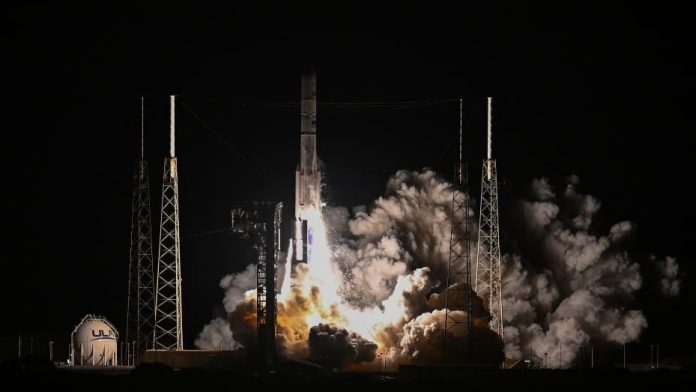The United States marked a significant leap in lunar exploration as the “Vulcan” rocket, crafted by aerospace giants Boeing and Lockheed Martin’s United Launch Alliance (ULA), successfully lifted off from the Cape Canaveral Space Force Station in Florida. This event, which took place in the early hours of Monday morning, marked the first attempt by a U.S.-based spacecraft to land on the moon in over 50 years since the final Apollo mission touched down in 1972.
At the forefront of this lunar mission is the privately-owned Pittsburgh-based company, Astrobotic Technology, with its lunar lander named “Peregrine” securely aboard the Vulcan rocket. This mission signifies a groundbreaking moment in space exploration, as it is the first time a private U.S. aerospace company has taken the lead in a moon mission.
The launch, deemed successful by ULA mission official Eric Monda, unfolded flawlessly. “Everything looks just spot on, just perfect,” Monda remarked from the company’s launch control room following Vulcan’s inaugural liftoff.
Approximately 30 minutes into the mission, ULA provided updates via social media, assuring the public that the flight remained stable as the spacecraft orbited Earth in the initial phase of its journey. The Centaur systems, responsible for propulsion, were reported to be stable during this coast period. The spacecraft aimed for a precise point in space above the Indian Ocean for its second engine firing.
Following this coast period, the rocket’s engines were reignited to facilitate the transition from its initial parking orbit to a trans-lunar injection orbit, setting the stage for the Peregrine lunar lander’s journey to the Moon.
Scheduled to touch down on February 23, the Peregrine mission holds the ambitious goal of collecting valuable data about the lunar surface, paving the way for future human expeditions.
If successful, it will mark the first soft landing by a U.S. spacecraft on the moon since the Apollo missions concluded in 1972. The mission represents a collaborative effort between established aerospace companies and private entities, underscoring the expanding role of the private sector in advancing space exploration.


